Today Current Affairs: 12th May 2022 for UPSC IAS exams, State PSC exams, SSC CGL, State SSC, RRB, Railways, Banking Exam & IBPS, etc
Table of Contents
Initial Public Offering (IPO) of LIC:
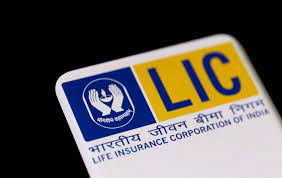
The biggest-ever initial public offering (IPO) of India is by the Life Insurance Corporation of India (LIC). It has been fully booked under all the offered categories
- LIC’s IPO has received bids for 2.95 times the shares that were being offered.
- This helped the central government to raise Rs 21,000 crore as they sold 3.5% of the stake in LIC.
- The IPO size is 16.2 crore equity shares but bids have been received for 47.77 crore equity shares.
- On 12th May, the bidders of this IPO will be allocated shares. On 17th May 2022, it will be listed on the stock exchanges.
- Rs 902-949 per equity share was fixed by the LIC for the issue.
- The eligible employees as well as the retail investors got a discount of Rs 45 per equity share.
- The policyholders received a discount of Rs 60 per share.
Initial public offering:
- An IPO is a process of offering shares to the public in which a company offers newly issued shares for the first time.
- IPOs are used to generate new equity capital for the companies.
- Through IPOs the investments of the private shareholders like the founders of the company can be monetized.
PMJJBY, PMSBY And APY Complete 7 Years:

Social security schemes Pradhan Mantri Jeevan Jyoti Bima Yojana (PMJJBY), Pradhan Mantri Suraksha Bima Yojana (PMSBY) and Atal Pension Yojana (APY) have completed seven years of their launch.
- The schemes were launched by Prime Minister Narendra Modi on May 9, 2015.
PMJJBY:
- It is a one-year life insurance scheme renewable from year to year offering coverage for death due to any reason.
- Eligibility: Individuals in the age group of 18-50 years having a savings bank or a post office account are entitled to enroll under the scheme.
- Life cover of Rs 2 lakh in case of death due to any reason against a premium of Rs 330 per annum.
- Achievements: 12.76 crore enrollments.
PMSBY:
- It is a one-year accidental insurance scheme renewable from year to year offering coverage for death or disability due to accident.
- Eligibility: Individuals in the age group of 18-70 years having a savings bank or a post office account are entitled to enroll under the scheme.
- Accidental death cum disability cover of Rs.2 lakh (Rs.1 lakh in case of partial disability) for death or disability due to an accident.
- Achievements: 28.37 crore enrollments.
APY:
- It seeks to provide financial security and cover future exigencies for the people in the unorganized sector.
- APY is administered by Pension Fund Regulatory and Development Authority (PFRDA) under the overall administrative and institutional architecture of the National Pension System (NPS).
- Eligibility: Open to all bank account holders in the age group of 18 to 40 years.
- Achievements: 4 Crore registrations.
Integrated Battle Groups (IBGs):
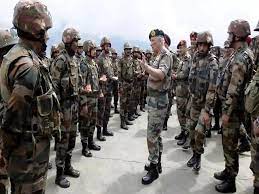
The Army has identified a holding formation on the Western front and a Strike formation on the Northern borders to be converted into agile Integrated Battle Groups (IBG).
- IBGs are brigade-sized, agile, self-sufficient combat formations, which can swiftly launch strikes against adversary in case of hostilities.
- Each IBG would be tailor-made based on Threat, Terrain and Task and resources will be allotted based on the three Ts.
- They need to be light so they will be low on logistics and they will be able to mobilise within 12-48 hrs based on the location.
- While a Command is the largest static formation of the Army spread across a defined geography, a Corps is the largest mobile formation.
- Typically, each Corps has about three Divisions.
- The idea is to reorganise them into IBGs which are Brigade sized units but have all the essential elements like infantry, armoured, artillery and air defence embedded together.
World Governance Indicators (WGI) : World Bank
![]()
According to a presentation prepared in 2020, by the then Principal Economic Advisor in the Ministry of Finance, Sanjeev Sanyal, inputs that go into the making of the World Bank’s World Governance Indicators (WGI) are arbitrary.
- A presentation titled— “Subjective Factors that impact India’s Sovereign Ratings: What can we do about it?” — was prepared by the Ministry of Finance for internal circulation within the government to counter the negative commentary on India.
- The 36-page presentation noted that around 18-26% of India’s sovereign rating is based on subjective factors and World Bank’s World Governance Indicators (WGI) is used as a proxy for these subjective factors.
- The Worldwide Governance Indicators (WGI) project reports governance indicators for over 200 countries for the following six dimensions of governance:
- Voice and Accountability
- Political Stability and Absence of Violence/Terrorism
- Government Effectiveness
- Regulatory Quality
- Rule of Law
- Control of Corruption
- These aggregate indicators are based on over 30 individual data sources produced by a variety of survey institutes, think tanks, non-governmental organizations (NGOs), international organizations, and private sector firms such as Economist Intelligence Unit (EIU), Varieties of Democracy (V-Dem) Project and Freedom House, etc.
- According to the government, World Governance Indicators (WGI) is based on impressions from the Western press or small surveys of NGOs and a handful of academics, many of them do not even have an India expert.
- Due to the negative commentary on India by these institutes there will be a drop in WGI scores.
- This could downgrade India’s Sovereign Ratings.
- Jammu and Kashmir Reorganisation Act of 2019, Citizenship Amendment Act, 2019, National Register of Citizens (NRC), construction of a Hindu temple at a disputed religious site, etc. were the topics on which there was negative commentary.
What Is W Boson?
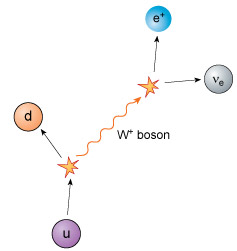
Researchers from Collider Detector at Fermilab (CDF) Collaboration, in the US, announced that they have made a precise measurement of the mass of the W boson.
- It has been stated that this precisely determined value did not match with the estimates from the standard model of particle physics.
- The W boson was first seen in 1983 at CERN, located on the Franco-Swiss border.
- In contrast to the photon, which is massless, the W bosons are quite massive, so the weak force they mediate is very short ranged.
- European Organisation for Nuclear Research (CERN) is the world’s largest nuclear and particle physics laboratory and best known as operator of the Large Hadron Collider, which found the elusive Higgs boson in 2012.
- Unlike the photon, which is electrically neutral, the W-plus and W-minus are both massive and charged.
- By exchanging such W bosons, a neutron can change into a proton, for example:
- This is what happens in beta decay, a radioactive interaction that takes place in the sun.
- Thus, the W boson facilitates the interactions that make the sun burn and produce energy.
- The standard model of elementary particles is a theoretical construct in physics that describes particles of matter and their interaction.
- It describes the elementary particles of the world as being connected by mathematical symmetry, just as two objects are connected by bilateral (left-right) symmetry.
- These are mathematical groups generated by continuous transformations from, say, one particle to another.
- According to this model there are a finite number of fundamental particles which are represented by the characteristic “eigen” states of these groups.
- The particles predicted by the model, such as the Z boson, have been seen in experiments.
- The last to be discovered, in 2012, was the Higgs boson which gives mass to the heavy particles.
Open-RAN Architecture:
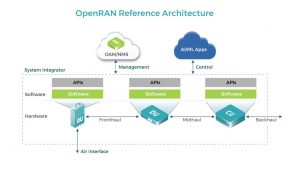
The Ministry of Communications has signed a Memorandum of Understanding (MoU) with M/s VVDN Technologies Private Limited to facilitate registered startups, innovators and MSMEs working in the field of Open RAN (Radio Access Network) to get their product tested at the existing lab of M/s VVDN.
- Such testing certification shall accelerate the research innovation in domestic design and manufacturing.
- It is aimed that India shall be emerging as a design leader in 5G/O-RAN.
- This test certification eco system will make India as design testing and certification hub of Asia.
O-RAN:
- Open-RAN is not a technology, but rather an ongoing shift in mobile network architecture that allows networks to be built using subcomponents from a variety of vendors.
- O-RAN has an open, multi-vendor architecture for deploying mobile networks, as opposed to the single-vendor proprietary architecture.
- O-RAN uses software to make hardware manufactured by different companies work together.
- The key concept of Open RAN is “opening” the protocols and interfaces between the various subcomponents (radios, hardware and software) in the RAN.
Radio Access Network (RAN):
- It is the part of a telecommunications system that connects individual devices to other parts of a network through radio connections.
- A RAN resides between user equipment, such as a mobile phone, a computer or any remotely controlled machine, and provides the connection with its core network.
- As a technical matter this is what the industry refers to as a disaggregated RAN.
UNCCD Conference Of Parties (COP15):

The Union Minister for Environment, Forest and Climate Change addressed the fifteenth session of the Conference of the Parties (COP15)of the United Nations Convention to Combat Desertification (UNCCD) in Cote d’Ivoire (Western Africa).
Highlights of the COP15:
- COP 15 is a key moment in the fight against desertification, land degradation and drought.
- It will build on the findings of the second edition of the Global Land Outlook and offer a concrete response to the interconnected challenges of land degradation, climate change and biodiversity loss.
- The Global Land Outlook (GLO), the UNCCD flagship publication, underscores land system challenges, showcases transformative policies and practices, and points to cost-effective pathways to scale up sustainable land and water management.
- Top Agenda:
- Drought, land restoration, and related enablers such as land rights, gender equality and youth empowerment are among the top items on the Conference agenda.
- Theme: ‘Land. Life. Legacy: From scarcity to prosperity’
National Mission For Clean Ganga:
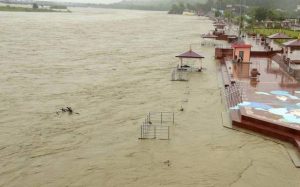
The National Mission for Clean Ganga (NMCG) has organised the 6th Edition of the monthly ‘Webinar with Universities’ series on ‘Igniting Young Minds, Rejuvenating Rivers’.
- The theme for the webinar was ‘Waste Water Management.’
- The National Mission for Clean Ganga (NMCG) is implemented by the National Council for Rejuvenation, Protection and Management of River Ganga also known as the National Ganga Council.
- This mission was established on 12th August 2011 under the Societies Registration Act,1860 as a registered society.
- Objectives:
- The mission incorporates rehabilitating and boosting the existing STPs (Sewage Treatment Plants) and instant short-term steps to curb pollution at exit points on the riverfront in order to check the inflow of sewage.
- To maintain the continuity of the water flow without changing the natural season variations.
- To restore and maintain the surface flow and groundwater.
- To regenerate and maintain the natural vegetation of the area.
- To conserve and regenerate the aquatic biodiversity as well as the riparian biodiversity of the river Ganga basin.
- To allow participation of the public in the process of protection, rejuvenation and management of the river.
AIM-PRIME Playbook:
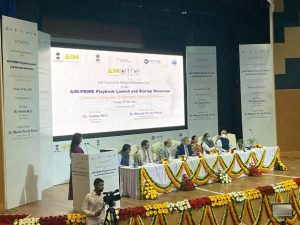
The AIM-PRIME (Program for Researchers in Innovation, Market Readiness, and Entrepreneurship) Playbook was launched by NITI Aayog.
- The playbook was aimed at promoting early-stage science-based, deep technology ideas to market through training and guidance over a period of 12 months using a blended learning curriculum.
AIM-PRIME:
- Objective:Promoting science-based, deep technology ideas to market through training and guidance over a period of 12 months.
- Deep technology is based on tangible engineering innovation or scientific advances and discoveries. Deep Tech is often set apart by its profound enabling power, the differentiation it can create, and its potential to catalyse change.
- Focus Area: Science-based, knowledge-intensive, deep technology entrepreneurship.
- Launching & Implementing Agency: AIM has collaborated with Bill & Melinda Gates Foundation (BMGF) to launch this nationwide programme which will be implemented by Venture Centre – a non-profit technology business incubator hosted by Council Of Scientific And Industrial Research–National Chemical Laboratory (CSIR-NCL).
- Beneficiaries: Technology developers (early-stage deep tech start-ups, and scientists/ engineers/clinicians) with strong science-based deep tech business ideas.
- Chief Executive Officers and Senior incubation managers of AIM Funded Atal Incubation Centers that are supporting deep tech entrepreneurs.
Cultivation Of Green Manure:

The Punjab agriculture department is promoting the cultivation of green manure these days as Punjab Agro is providing subsidy on the seed at the rate of Rs 2,000 per quintal, which costs Rs 6,300 per quintal without subsidy.
- Green manures are crops grown specifically for maintaining soil fertility and structure.
- They are normally incorporated back into the soil, either directly, or after removal and composting.
- There are three main varieties of green manure, including Dhaincha, Cowpea, Sunhemp.
- Also some crops such as summer moong, mash pulses and guar act as green manure.
- Green manure varieties are incorporated into the soil when the crop is 42-56 days old.
- Green manure must be leguminous in nature, bear maximum nodules on its roots to fix large amount of atmospheric nitrogen in the soil.
- It helps in enhancing the organic matter in the soil, meets the deficiency of the micronutrients and reduces the consumption of the inorganic fertilisers etc.
Param Vishisht Seva Medal : Army Chief Gen Manoj Pande

Army chief Gen Manoj Pande was given the Param Vishisht Seva Medal for distinguished service of exceptional order by President Ram Nath Kovind at a Defence investiture ceremony held at the Rashtrapati Bhavan.
- Param Vishisht Seva Medal (PVSM) is a military award of India.
- It was constituted in 1960 and since then it is awarded in recognition to peace-time service of the most exceptional order and may be awarded posthumously.
- All ranks of the Indian Armed Forces including Territorial Army, Auxiliary and Reserve Forces, Nursing officers and other members of the Nursing services and other lawfully constituted Armed Forces are eligible for the award.
Himachal Pradesh : First ‘Smoke-Free State’ In India

Himachal Pradesh is the first ‘smoke-free state’ in India.
- This milestone has been achieved due to the effective implementation of Central Governments’ Pradhan Mantri ‘Ujjwala Yojana’(PMUY) and ‘Himachal Grihini Suvidha Scheme’ of the Himachal Pradesh government.
- Now, 100% of households in Himachal Pradesh have LPG connections in their houses.
- Pradhan Mantri Ujjwala Yojana (PMUY) was launched by Prime Minister Narendra Modi on May 1, 2016 from Ballia district in Uttar Pradesh to provide clean cooking fuel to poor households and the target to provide Eight crore deposit free LPG connections was achieved in September, 2019.
- With the implementation of PMUY, approx. 1 lakh people have got employment through the LPG distribution system all over India as of February 23, 2022.




